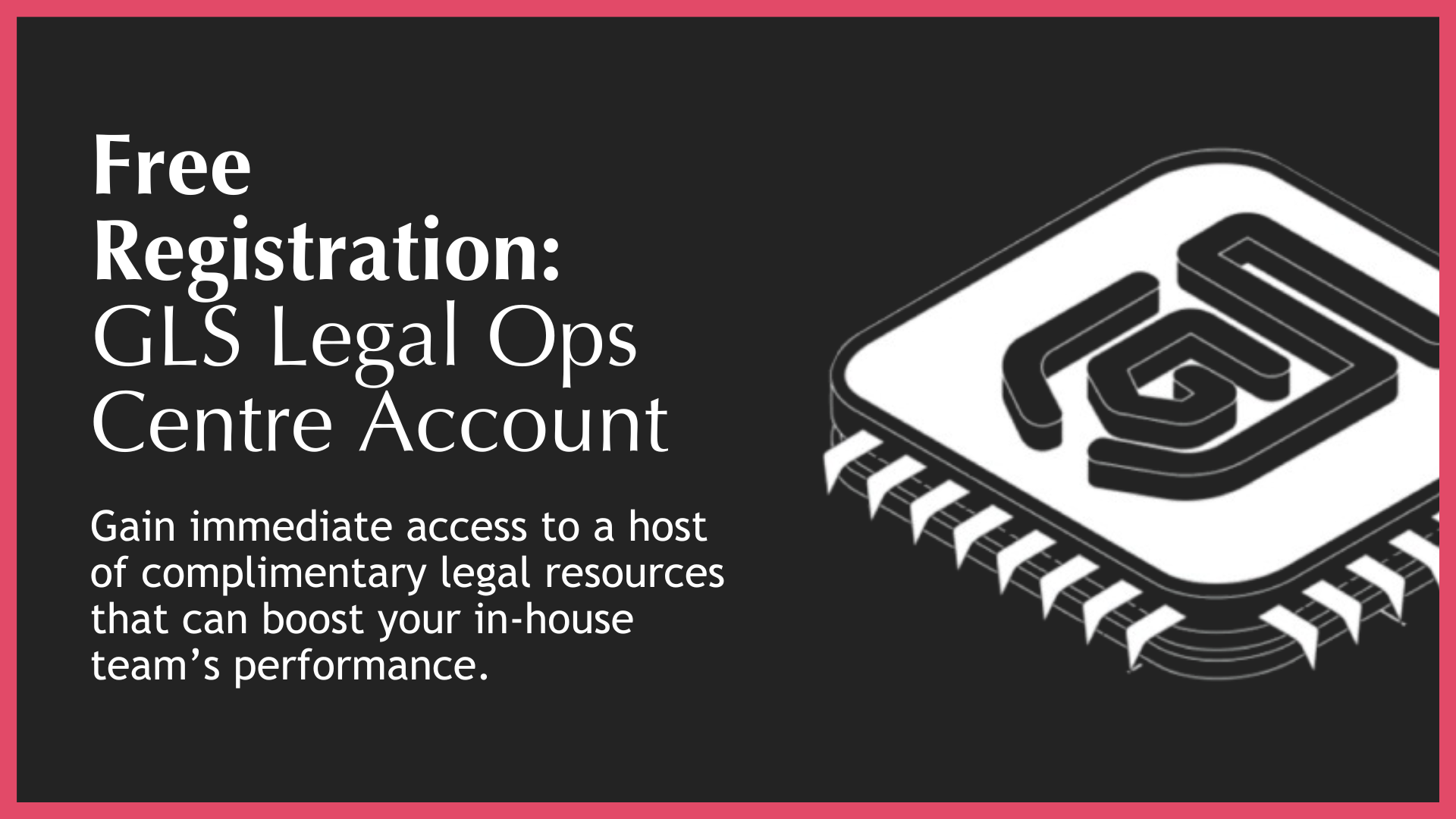The GLS Legal Operations Centre
The ultimate in-house legal department resource stack
Back
External Service Provider Guidelines
What Is It
The External Service Provider Guidelines station is about setting the rules of engagement for law firms and other external legal vendors. It’s the legal team’s opportunity to define – in writing – what good looks like, what value means, and how performance will be measured. Without these guidelines, law firms operate in a vacuum, defaulting to their own standards, billing practices, and delivery models – which rarely align with the needs of the in-house team.
This station is not about being adversarial. It’s about being clear. Law firms are critical partners, but they must be managed like any other vendor – with expectations, accountability, and consequences. The guidelines should cover cost management, responsiveness, innovation, knowledge transfer, and alignment with the Group Legal Policy. They should also make clear that the legal team is not a passive consumer, but an active manager of legal value.
These guidelines are especially important when engaging Alternative Legal Service Providers (ALSPs). ALSPs operate on different models and can deliver significant cost savings – but only if their engagement is structured and aligned with internal expectations. GLS, for example, offers ALSP support that can reduce legal costs by up to 80%, but the value is maximised when expectations are clearly defined upfront.
Ultimately, this station is about taking control. It’s about ensuring that every dollar spent externally is tied to a measurable outcome – and that every provider knows exactly what’s expected of them.
Scope
The scope of the External Service Provider Guidelines station includes:
◼️Engagement Expectations: Defining what the legal team expects in terms of responsiveness, quality, and collaboration.
◼️Cost Management Protocols: Setting rules around billing practices, fee structures, discounts, and cost transparency.
◼️Performance Metrics: Establishing KPIs for provider evaluation, including turnaround time, accuracy, and value creation.
◼️Innovation Requirements: Encouraging providers to demonstrate use of technology, process optimisation, and cost-saving initiatives.
◼️Knowledge Transfer Obligations: Requiring providers to share insights, templates, and training to build internal capability.
◼️Risk & Compliance Alignment: Ensuring providers operate within the legal team’s risk posture and compliance framework.
◼️Onboarding Integration: Embedding guidelines into provider onboarding and engagement processes.
◼️Review & Enforcement Mechanisms: Creating processes for monitoring compliance and addressing underperformance.
Resource Status
In GLS legal ops speak – the External Service Provider Guidelines is considered a “Foundational” resource within the process ecosystem of an in-house legal team.
The Foundational Resource is a CRE that is responsible for determining the overall performance capabilities of a “critical” legal function. If it is not optimised, the function can never be optimised.
Best Practice Features
The best practice features of the External Service Provider Guidelines are as follows:
◼️Written Guidelines Document: A formal, accessible document shared with all external providers.
◼️Alignment with GLP: Guidelines are fully aligned with the Group Legal Policy and legal team priorities.
◼️Provider Acknowledgement: Providers formally acknowledge and agree to the guidelines as part of onboarding.
◼️Embedded in Contracts: Key expectations are incorporated into engagement letters and service agreements.
◼️Performance Dashboard Integration: Guidelines are linked to performance tracking tools and dashboards.
◼️Annual Review Cycle: Guidelines are reviewed and updated annually to reflect evolving needs.
◼️Internal Training: Legal team members are trained on how to enforce and apply the guidelines.
◼️ALSP Compatibility: Guidelines are structured to accommodate both traditional law firms and ALSPs.
Business Value
The External Service Provider Guidelines deliver the following value to the Business:
◼️Cost Control: Clear billing expectations reduce overspend and improve budget predictability.
◼️Performance Accountability: Providers are held to measurable standards, improving service quality.
◼️Faster Delivery: Defined expectations reduce delays and improve turnaround times.
◼️Strategic Alignment: External support is aligned with business goals and legal team priorities.
◼️Innovation Incentives: Providers are encouraged to bring forward cost-saving and efficiency-enhancing ideas.
◼️Risk Mitigation: Ensures providers operate within the business’s legal and compliance framework.
Legal Department Value
◼️Empowered Vendor Management: Legal teams can manage providers proactively, not reactively.
◼️Reduced Admin Burden: Standardised expectations streamline engagement and reduce friction.
◼️Improved Collaboration: Providers understand the legal team’s goals and constraints.
◼️Enhanced Credibility: Demonstrates to the business that legal is managing external spend strategically.
◼️Better Negotiation Leverage: Guidelines support fee discussions and performance reviews.
◼️Operational Consistency: Creates a unified approach to external engagement across the legal team.
Who Needs It
The External Service Provider Guidelines are essential for:
◼️General Counsel
◼️Heads of Legal Operations
◼️Legal Team Leads
◼️Procurement and Vendor Management Teams
◼️CFOs seeking legal spend accountability
Productivity Consequences
A legal team operating without External Service Provider Guidelines will face a wide range of inefficiencies including:
◼️Uncontrolled Legal Spend: Providers bill without clear limits or expectations.
◼️Inconsistent Service Quality: No standardisation of delivery or performance.
◼️Delayed Mobilisation: Providers take longer to onboard and align with internal needs.
◼️Poor Strategic Fit: Providers may not understand the legal team’s goals or risk posture.
◼️Weak Accountability: No framework for addressing underperformance or misalignment.
◼️Limited Innovation: Providers are not incentivised to deliver cost-saving or efficiency-enhancing solutions.
Tech Implication
The External Service Provider Guidelines station leverages technology through:
◼️Onboarding Platforms: Guidelines embedded into digital onboarding workflows.
◼️Performance Dashboards: Linked to provider KPIs and service delivery metrics.
◼️Contract Management Systems: Guidelines incorporated into engagement documentation.
◼️E-Billing Platforms: Guidelines inform billing rules and compliance checks.
◼️Collaboration Tools: Guidelines shared and enforced through provider portals and shared workspaces.
What Next?
The GLS Knowledge Centre has a wealth of resources available for learning more about the importance of External Service Provider Guidelines and how you can effectively implement one - check out a few on the right.
The GLS Legal Operations Centre contains everything you need to effectively implement your own tailored External Service Provider Guidelines in a cost-effective and timely manner. Check out the resources linked on the right.
Also, feel free to contact GLS to book a consult to discuss your External Service Provider Guidelines needs right here.

The GLS Legal Operations Centre
Register to access your complimentary Day 1 Resource Stack packed with legal team performance resources.

GLS Ultimate Guide To Legal Operations
Download this and read it thoroughly and regularly. It is a wonderful transformation companion.

Book A No-Obligation Consultation
If you would like discuss your legal transformation needs, please book a 30 minute free consultation with us.

GLS Legal Transformation Boot Camp
Our hugely successful, 10-week long, email-based boot camp on how to effectively transform your legal team.




